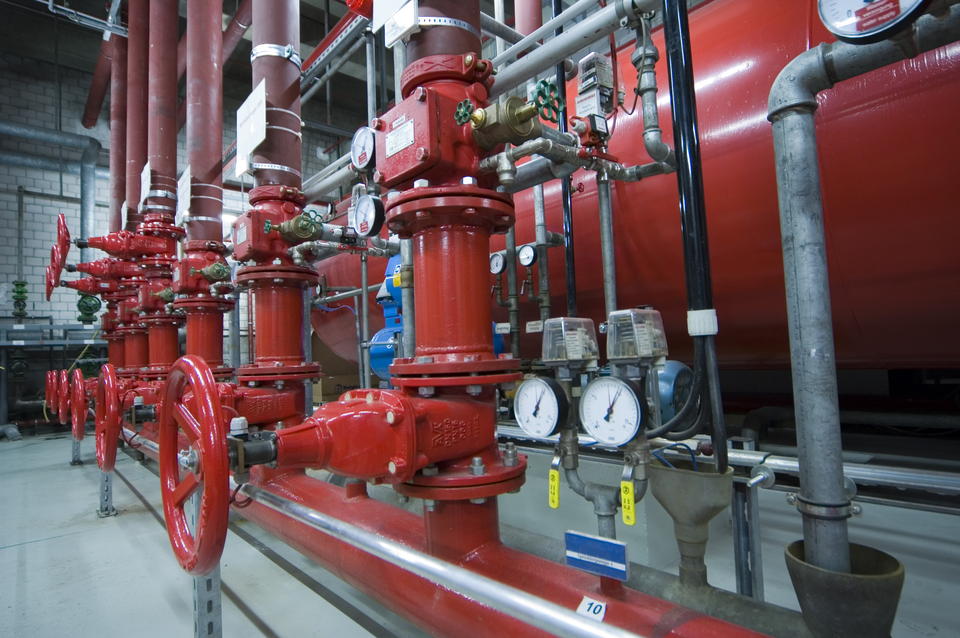Our Comprehensive Manual to Dealing with Low Water Pressure in Your Home
Our Comprehensive Manual to Dealing with Low Water Pressure in Your Home
Blog Article
They are making several great points on 4 Ways to Troubleshoot Low Water Pressure overall in this great article below.

Low tide pressure in your house can be a discouraging problem, impacting everything from bathing to cleaning meals. If you're experiencing weak water flow, there are several feasible causes and remedies to explore. In this overview, we'll discuss typical factors for low tide pressure and functional steps to deal with the problem efficiently.
Introduction to Low Water Stress
Low tide stress occurs when the circulation of water from your taps, showers, and various other fixtures is weak than normal. This can make everyday jobs much more challenging and less effective. Understanding the root causes of low water stress is important to locating the appropriate service.
Common Causes of Low Water Pressure
Pipe Obstructions
Gradually, pipelines can become clogged with mineral deposits, debris, or particles, limiting the flow of water. This is an usual problem in older homes with galvanized steel pipes.
Deterioration
Deterioration within pipelines can cause leaks and decreased water stress. Rust buildup can restrict water circulation, particularly in maturing plumbing systems.
Faulty Pressure Regulatory Authorities
Pressure regulators are responsible for preserving regular water stress in your home. If they malfunction, it can lead to low tide stress or irregular flow throughout your home.
Municipal Water System Issues
Often, the issue lies outside your home. Municipal water supply issues, such as main line leaks or upkeep work, can momentarily minimize water stress in your area.
How to Detect Low Tide Pressure
Inspecting Taps and Components
Beginning by evaluating the water stress at different faucets and fixtures throughout your home. If the problem is separated to particular locations, it may show local troubles.
Evaluating Pipes
Inspect noticeable pipelines for indicators of leaks, deterioration, or clogs. Take notice of any type of unusual audios, such as banging or rattling pipelines, which could show issues within the plumbing system.
Consulting with a Plumber
If you're incapable to pinpoint the cause of low water stress, consider employing a specialist plumber to conduct a comprehensive assessment. They can recognize underlying issues and suggest proper remedies.
DIY Solutions to Repair Low Water Pressure
Cleaning Up Aerators and Showerheads
Mineral deposits can collect in aerators and showerheads, lowering water flow. Get rid of and cleanse these parts frequently to improve water stress.
Flushing Hot Water Heater
Sediment accumulation in the water heater can restrict circulation and lower efficiency. Purging the container periodically assists get rid of sediment and preserve ideal efficiency.
Inspecting Pressure Regulatory Authority
Make certain that the pressure regulator is working correctly. Changing or changing the regulator can assist bring back correct water pressure throughout your home.
Clearing Clogs in Water Lines
For minor obstructions, try making use of a plumbing snake or chemical drainpipe cleaner to clear obstructions in pipes. Beware when making use of chemicals and follow safety and security standards.
When to Call an Expert Plumber
If do it yourself initiatives fail to solve the concern or if you suspect considerable plumbing issues, it's ideal to look for aid from a certified plumber. They have the expertise and tools to address complex issues safely and efficiently.
Preventive Measures to Maintain Water Pressure
Normal Maintenance
Arrange regular upkeep for your plumbing system to prevent problems such as deterioration, leaks, and blockages. Resolving small issues early can aid prevent more substantial repairs later on.
Setting Up a Stress Booster
Think about mounting a stress booster pump to enhance water stress in areas with constantly low circulation. This can be specifically beneficial for multi-story homes or residential properties with high-demand fixtures.
Tracking Water Usage
Bear in mind water use practices and avoid overtaxing the plumbing system. Simple adjustments, such as astonishing showers and laundry loads, can assist preserve ample water stress.
Conclusion
Handling low water pressure can be discouraging, however recognizing the underlying reasons and applying ideal remedies can recover optimum circulation throughout your home. Whether it's cleaning up aerators, evaluating pipelines, or seeking advice from a plumber, taking aggressive steps can guarantee a steady supply of water for your daily demands.
FOUR WAYS TO FIX LOW WATER PRESSURE NOW
Turning on a shower or faucet only to find the water comes out in a sad, slow drizzle is never a good feeling. How exactly are you supposed to wash a pan or take a quick shower when it takes 10 minutes just to rinse off a little soap? The good news is that when your water pressure is bad, there's always a cause: typically one that can be easily fixed. Here are some of the most common causes of low pressure and what you can do to fix the issue:
DEBRIS AND MINERAL DEPOSIT BUILDUPS
If you notice low water pressure from just one or two of the fixtures in your house, the problem likely has to do with debris buildup. Water is full of minerals and other debris, all of which can accumulate in your pipes and on your fixtures. This can cause a blockage that affects how much water flows through. To fix this, try filling a small plastic bag with white vinegar, and use a rubber band to hang it around your showerhead or faucet. Let the head of the fixture soak for a few hours, and the vinegar should loosen the deposits.
WATER LEAKS
Leaks are another common cause of low water pressure. If water is flowing out of your plumbing through a hole or crack before it can reach your fixture, the pressure coming out of the faucet or showerhead will be lower. A plumbing professional is your best bet for finding and repairing a leak in your water supply pipes.
Leaks are another common cause of low water pressure. If water is flowing out of your plumbing through a hole or crack before it can reach your fixture, the pressure coming out of the faucet or showerhead will be lower. A plumbing professional is your best bet for finding and repairing a leak in your water supply pipes.
FOUR WAYS TO FIX LOW WATER PRESSURE NOW
Turning on a shower or faucet only to find the water comes out in a sad, slow drizzle is never a good feeling. How exactly are you supposed to wash a pan or take a quick shower when it takes 10 minutes just to rinse off a little soap? The good news is that when your water pressure is bad, there's always a cause: typically one that can be easily fixed. Here are some of the most common causes of low pressure and what you can do to fix the issue:
DEBRIS AND MINERAL DEPOSIT BUILDUPS
If you notice low water pressure from just one or two of the fixtures in your house, the problem likely has to do with debris buildup. Water is full of minerals and other debris, all of which can accumulate in your pipes and on your fixtures. This can cause a blockage that affects how much water flows through. To fix this, try filling a small plastic bag with white vinegar, and use a rubber band to hang it around your showerhead or faucet. Let the head of the fixture soak for a few hours, and the vinegar should loosen the deposits.
WATER LEAKS
Leaks are another common cause of low water pressure. If water is flowing out of your plumbing through a hole or crack before it can reach your fixture, the pressure coming out of the faucet or showerhead will be lower. A plumbing professional is your best bet for finding and repairing a leak in your water supply pipes.
Leaks are another common cause of low water pressure. If water is flowing out of your plumbing through a hole or crack before it can reach your fixture, the pressure coming out of the faucet or showerhead will be lower. A plumbing professional is your best bet for finding and repairing a leak in your water supply pipes.
A VALVE ISSUE
If you have low water pressure throughout your home, check your main shut-off valve to make sure it's completely open. You may also want to see if there's a pressure-reducing valve installed. If there is, have a plumber help you adjust the settings to get the pressure you're looking for.
OTHERS USING WATER
Believe it or not, your low water pressure could be caused by your neighbors. If you notice low pressure at certain times of day, it may be because you and the people living next to you have similar schedules - when everyone is showering at the same time, the pressure will be lower in every home. Low pressure throughout the neighborhood may also be caused by an issue with your municipal water supply. If that's the case, call the supplier to see if they're working on the issue.
https://www.rotorooter.com/blog/water-leaking/low-water-pressure-fixes/

We had been brought to that editorial on 10 Reasons for Low Water Pressure in Your House from a friend on our other web blog. For those who liked our post if you please do not forget to share it. Thanks a lot for being here. Kindly come by our site back soon.
Click Here Report this page